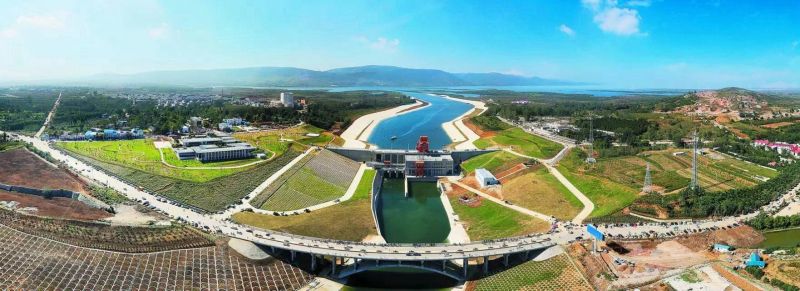100,000 IoT Sensors Monitor a 1,400-Kilometer Water Diversion Canal in China
Published on by Water Network Research, Official research team of The Water Network in Government
More than 100,000 individual sensors stud the 1400-kilometer waterway and scan the canal for structural damage, track water quality and flow rates, and watch for intruders.
By Tracy Staedter

The South-North Water Transfer Project Central route starting point taocha , Source: Wikimedia Commons, Author: Nsbdgc
As an engineering feat, China’s massive South-to-North Water Diversion Project is a stunner. Three artificial canals, each more than 1000 kilometers long, are in various stages of completion and designed to reroute water from the country’s rainy south to its parched north.
The massive internet-of-things (IoT) network that has been quietly overseeing the middle route is impressive in its own right. More than 100,000 individual sensors stud the 1400-kilometer waterway, which connects the Danjiangkou reservoir to Beijing and Tianjin. For the last year, it’s been scanning the canal for structural damage, tracking water quality and flow rates, and watching for intruders, whether humans or animals.
“This system benefits more than 50 million people daily, not mentioning the people along the project,” says the IoT network’s technical lead, Yang Yang, Director of the CAS Key Lab of Wireless Sensor Network and Communication at the Shanghai Institute of Microsystem and Information Technology (SIMIT), part of the Chinese Academy of Sciences.
He says what they learn from the network will likely be applied to other massive infrastructure projects, including the Eastern and Western Routes of the water transfer system, as well as more modest endeavors, like monitoring the glass facades of skyscrapers.
Planning for the IoT network started back to 2012. Yang and his team, including Dr. Wuxiong Zhang, Associate Professor at SIMIT, Chinese Academy of Sciences, spent two weeks traveling the length of canal, assessing its needs.
They saw many challenges. The water traversed regions prone to earthquakes, making infrastructure vulnerable to damage. The water’s flow would need to be controlled so that none of it would go to waste. Its quality would also need to be checked periodically to ensure no pollutants or toxins made their way into city drinking water supplies. In some places, local villagers scaled the fence to fish or swim in the water. That created safety risks.
Yang and his team grouped the challenges they saw into three broad categories—infrastructure, water, and security—and, after some discussions, settled on more than 130 different kinds of internet-connected sensors to install along the canal. Infrastructure sensors measuring stress, strain, vibration, displacement, earth pressure, and water seepage, were embedded in the ground adjacent to the canal and in the concrete banks and bridges as well as the 50 dams built to control the water’s flow.
Read full article: IEEE Spectrum
Media
Taxonomy
- Monitors
- Infrastructure
- Infrastructure Management
- Sensors
- Sensorial networks
- Infrastructure
- Canals
- Internet of Things (IoT)
1 Comment
-
1400 km to multiply by 5 meters width - this is 700 acres of area.On each hectare lived 20 tons of underground living creatures.She was all lost.A new mirror of the water surface evaporates the untreated water.A significant contribution to climate change.
1400 км умножить на 5 метров ширины - это 700 гектаров площади. На каждом гектаре жило 20 тонн подземной живности. Вся она погибла. А новое зеркало водной глади испаряет необработанную природой воду. Достаточно весомый вклад в изменение климата.